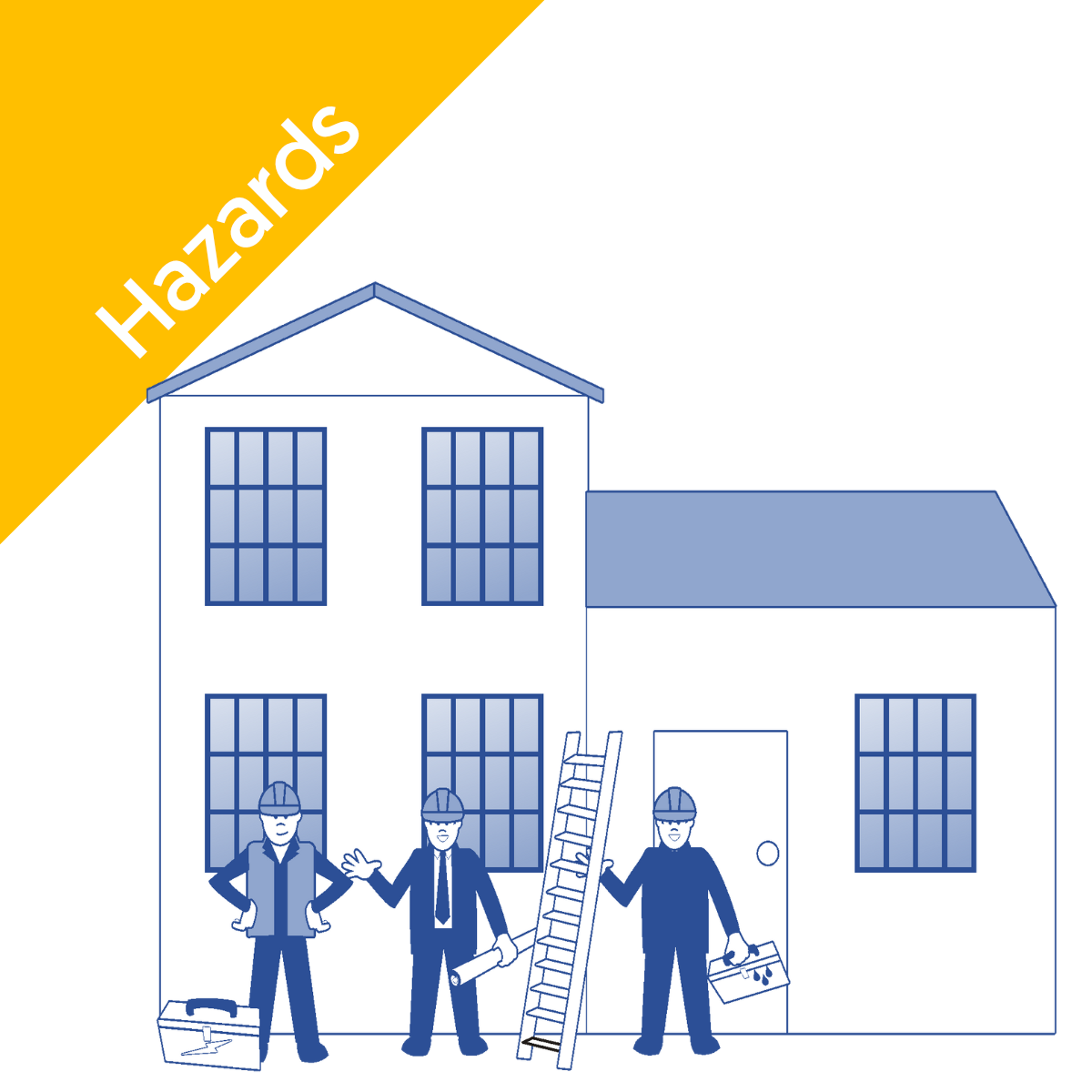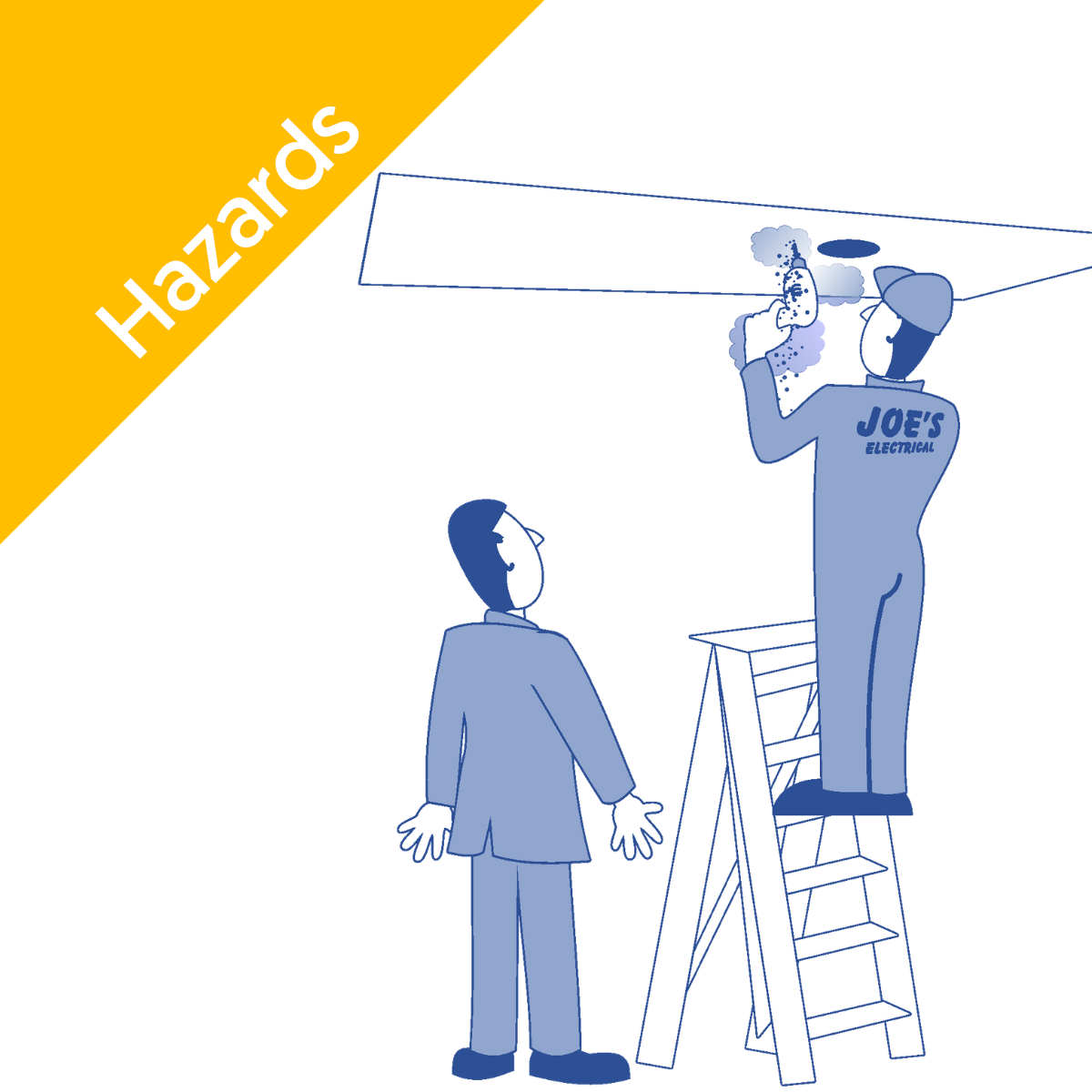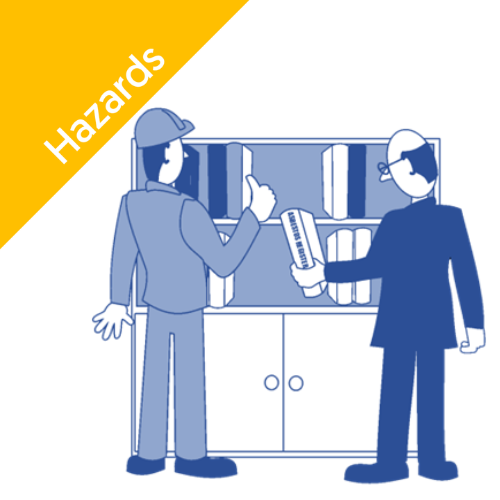What Is the 'Asbestos—Your Duty' Campaign About?
This campaign is aimed at those responsible for the upkeep of buildings such as:
- Factories, warehouses, offices, and shops.
- Public spaces; such premises include hospitals, schools, religious buildings, museums, and libraries.
Under the law, any ACM present in these buildings must be properly managed to prevent harm.
Why This Matters
Asbestos can hide in plain sight, embedded in building materials such as ceiling tiles, insulation, and flooring. Without proper management, the risk of exposure is real for anyone who works in or visits these spaces. While ACMs were outlawed for use in construction in 2000, millions of buildings predating this year still contain these harmful materials.
The duty to manage asbestos is a legal requirement designed to protect workers, visitors, and the public. Ignoring it could lead to severe health risks and legal consequences.
Resources to Help You Comply
The Asbestos—Your Duty campaign provides a variety of resources to help duty holders manage ACMs safely and effectively. Here’s what’s available:
- Video Guide: A short video outlining the steps to comply with the duty to manage asbestos.
- Templates and Examples: Free blank templates to help you manage ACMs in your building.
- Podcast and webinar: Learn from experts by listening to the campaign podcast and watching the free webinar.
- One-Page Guide: A quick reference guide with essential information and links to key resources.
- Campaign Assets: Downloadable materials to share within your network.
All of these tools are designed to make compliance easier and ensure everyone understands their responsibilities.
Who are the Duty Holders?
Understanding who has legal duties about asbestos management is important. These people, called duty holders, are usually those in charge of the place. Those with a clear responsibility include building owners, landlords, or organisations that take care of maintenance, especially concerning the presence of asbestos and the associated risk.
Attending appropriate training is essential to know that these legal duties cannot be handed off to others. For an easy-to-follow online Asbestos Awareness Course, check out our training.
What are the Duty Holder's Responsibilities?
Dutyholders must take reasonable steps to keep everyone safe in their buildings. In simple terms, this means they need to take the following necessary steps:
- Find out if asbestos is present through surveys.
- Conduct a risk assessment for ACMs.
- Create and carry out an asbestos management plan.
- Review and update the plan regularly.
Additionally, duty holders are legally required to share information about where the ACM is located and it's condition. This information should be easily available to anyone who might contact or disturb these materials while working, such as maintenance staff and emergency services.
Final Thoughts
The new Asbestos - Your Duty campaign highlights the importance of safety in public buildings, including common areas. Duty holders need to know their responsibilities for successful asbestos management, including the approved code of practice. By using the resources from this campaign, duty-holders can take steps to deal with ACM issues and protect the health of those who use the building. Identifying these materials and following best practices are key actions to prevent health risks linked to asbestos exposure.
Further Reading

Asbestos
Stay safe and informed with the new "Asbestos and You" campaign by HSE. Learn more about the significance of asbestos health and safety in the UK.

Asbestos
Discover a complete duty holder guide to managing asbestos, from identifying risks and creating a plan to maintaining an asbestos register and ensuring safety compliance.

Asbestos
Discover the essential HSE asbestos guide for tradespeople on our blog. Stay informed and safe with our comprehensive resources.

Asbestos
Asbestos accounts for the highest number of work-related deaths in the UK. Learn what asbestos is, what it looks like and where you are likely to find it.

Asbestos
Learn how to conduct an asbestos risk assessment in 5 steps. Identify health risks, who may be at risk, establish safety measures, record findings, and review regularly. Ensure workplace safety with our expert guidance.

Asbestos
Stay safe and informed with the new "Asbestos and You" campaign by HSE. Learn more about the significance of asbestos health and safety in the UK.

Asbestos
Discover a complete duty holder guide to managing asbestos, from identifying risks and creating a plan to maintaining an asbestos register and ensuring safety compliance.

Asbestos
Discover the essential HSE asbestos guide for tradespeople on our blog. Stay informed and safe with our comprehensive resources.

Asbestos
Asbestos accounts for the highest number of work-related deaths in the UK. Learn what asbestos is, what it looks like and where you are likely to find it.

Asbestos
Learn how to conduct an asbestos risk assessment in 5 steps. Identify health risks, who may be at risk, establish safety measures, record findings, and review regularly. Ensure workplace safety with our expert guidance.







